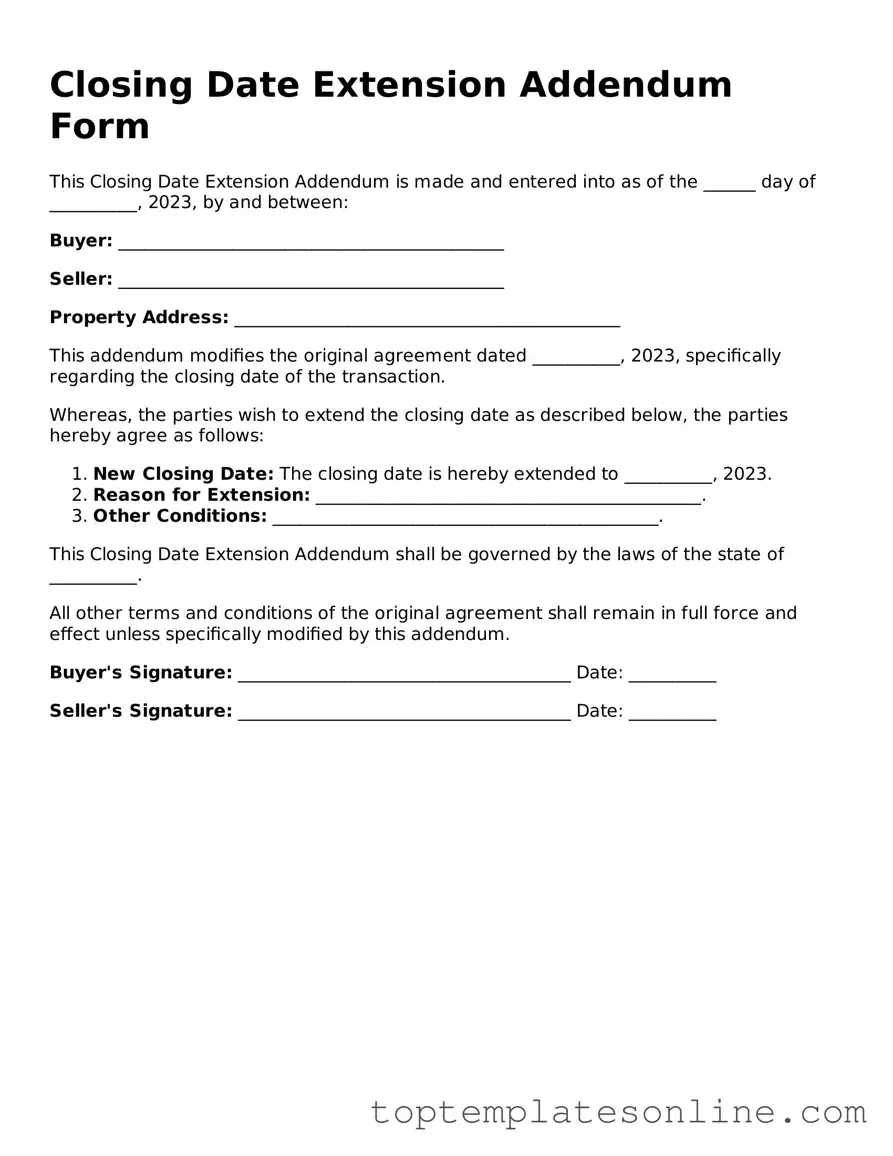Attorney-Approved Closing Date Extension Addendum Form Form
The Closing Date Extension Addendum Form is a legal document used in real estate transactions to modify the original closing date of a property sale. This form allows both buyers and sellers to agree on a new closing date, ensuring that all parties are aligned and reducing the risk of misunderstandings. Understanding how to effectively use this form can help facilitate smoother transactions and avoid potential delays.
Customize Closing Date Extension Addendum Form Here
